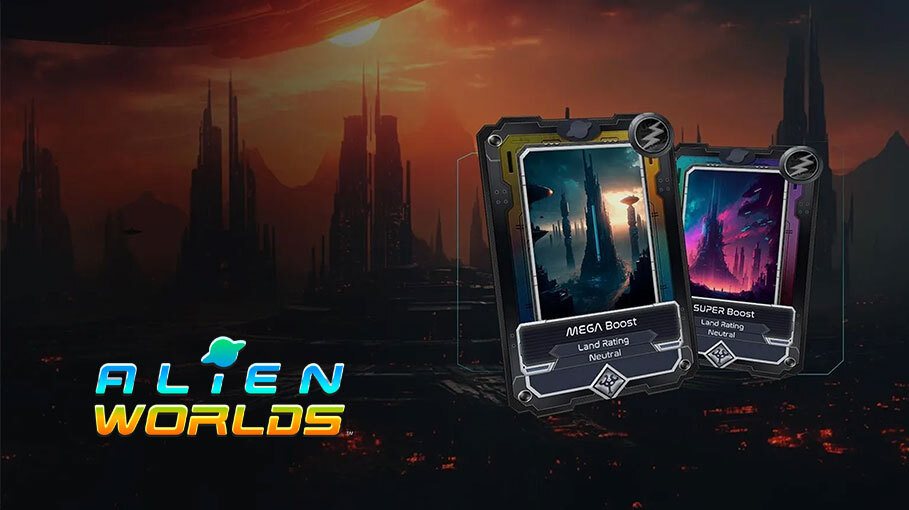With the gaming market set to grow at 13.4% yearly until 2030, gaming is bigger than ever. And in a digital era marked by blockchain innovation, GameFi emerges as a game-changer, blending gaming with Web3 technologies. This article sheds light on what GameFi is, explaining its core elements, the exciting opportunities it offers players and publishers in Web3 Gaming, and the complex challenges it faces.
GameFi isn’t just a passing trend; it’s a dynamic system that lets players earn while they play, provides publishers with new ways to make money, and creates special communities. But it also needs to deal with tricky issues like regulations, market ups and downs, and security concerns. As GameFi continues to evolve, it’s not just changing how we see gaming; it’s a symbol of the resilience and innovation of our digital world. The future of gaming has arrived, and GameFi is leading the way, ready to transform the gaming industry in ways we are only beginning to understand.
Web3 Gaming or GameFi: What’s the Difference?
Web3 gaming and GameFi are terms often used interchangeably but represent slightly different concepts within the same ecosystem of blockchain-based games. Web3 gaming broadly refers to games built on decentralised web technologies, allowing for things like true ownership of in-game assets, interoperability between games, and decentralised governance. This enhances the gaming experience by allowing players to have a stake in the game’s world through ownership and trading of in-game assets across various platforms.
GameFi, short for “Game Finance,” is a subset of Web3 gaming that specifically blends gaming with decentralised finance (DeFi). It emphasises the financialisation of the gaming experience, allowing players to earn real-world value through play-to-earn models, staking, trading, and participating in DeFi protocols linked to the game.
The core of GameFi
In GameFi, the economic activity within the game is not just a part of the gameplay but is central to the experience. Some of the key components of GameFi include play-to-earn models as well as tokenised assets, both of which we will explain below to give you a better understanding of what GameFi is about.
Play-to-earn models
Play-to-earn models are models for games in which players get rewarded for playing the game. These rewards can then be exchanged for real money (or cryptocurrencies).
In contrast to traditional gaming models such as pay-to-play or free-to-play models, where players either purchase the game upfront or invest money for in-game benefits, play-to-earn models harness the power of blockchain technology to establish an entirely new dynamic. While pay-to-play and free-to-play models have effectively catered to gamers’ preferences for years, the introduction of play-to-earn models represents a shift in how players perceive their gaming experience and their potential to make money while gaming.
Play-to-earn models approach this differently and compensate players for their time spent in the game. This compensation usually happens in the form of digital assets, both in the form of ‘regular’ tokens as well as non-fungible tokens. Players can also receive certain rewards for reaching specific milestones, achievements, levels, etc. After a player receives these rewards, they can either use them again in the game or sell them on a marketplace.
All in all, this kind of model provides a greater incentive for the players to continue playing, and it allows game publishers to push players in certain directions by changing the reward structure.
Tokenised assets
Closely related to these play-to-earn models are tokenised assets. In a GameFi context, tokenised assets are actually the same as regular in-game assets, with the only difference being that instead of the game developers controlling the assets, the user controls the asset.
And this opens up a whole barrage of options. First of all, when players purchase in-game assets, their financial investment doesn’t simply disappear within the gaming ecosystem. Instead, they can sell or trade these items outside the game environment, linking their tokenised assets to real-world financial opportunities. While platforms like Steam currently allow the sale of in-game assets, these transactions are limited to the platform’s ecosystem. Tokenised assets have the potential to break down these barriers, offering a more versatile and user-friendly solution.
Secondly, tokenised assets empower players with greater influence over the in-game economy. Traditionally, game economies are subject to the control of developers. While this dynamic still holds true to some extent in play-to-earn games, players are gaining a voice in determining the value and significance of different aspects of the game, including specific items or features.
Thirdly, by tokenising assets, game developers can hand out limited in-game assets more transparently and easily. Blockchain technology can prove the scarcity of the items, adding more trust and also making it easy to verify the authenticity of in-game items in marketplaces and inventories.
These tokenised assets are key to play-to-earn models, as well as to GameFi as a whole.

Opportunities of GameFi
There are a variety of opportunities opened up by GameFi, ranging from new ways to make money for both players and game publishers to the opportunity to create new kinds of exclusive communities. Let’s dive into each of these below!
Earn money while playing
GameFi offers gamers a unique chance to turn their favourite pastime into a potentially lucrative venture. Unlike traditional gaming, where the fun is its own reward, GameFi lets players earn real money while they enjoy virtual adventures. This shift is exemplified by play-to-earn models, which allow players to collect valuable in-game items and cryptocurrencies as they play.
Another fascinating aspect of this is the creation of limited special items. Game developers can use blockchain tech to make unique, scarce digital goods that players can get through in-game achievements or events. The scarcity of these items generate excitement, prompting players to compete for their possession, which often leads to an appreciation in their value and potential resale at a profit in secondary marketplaces. Furthermore, they can be used by game developers to incentivise player behaviour or to generate hype around certain events.
Secondary market fees for publishers
For game publishers, GameFi opens up a new way to make money through secondary market fees. As players actively trade and sell tokenised in-game items on external marketplaces, publishers can charge small fees for each transaction. These fees, although tiny individually, add up significantly as more and more trades happen within the game’s ecosystem.
These secondary market fees offer publishers a steady income source that goes beyond the traditional game purchase or in-game purchases model. This consistent revenue stream enables publishers to invest more in game development, enhancing the overall gaming experience and attracting a wider audience.
The secondary market also creates a lively ecosystem, encouraging players to actively participate in trading and investing in virtual assets. This dynamic player-driven economy enhances the game’s long-term appeal.
Exclusive communities
Another benefit of GameFi is the opportunity to create exclusive communities within gaming ecosystems. As players accumulate achievements, assets, and more, they become part of a unique group of individuals who share similar experiences or possess similar skills and/or items. Communities can be built around the shared ownership of rare in-game items, achievements, and a mutual interest in exploring the possibilities of GameFi.
These exclusive communities offer several advantages. They enable players to verify and show off their in-game achievements and items transparently, thanks to blockchain technology. This transparency builds trust among players and makes it easy to confirm the authenticity of in-game items in marketplaces and player inventories.
Game developers can also use these exclusive communities to foster direct communication with their player base. This direct engagement allows for real-time feedback, which can be invaluable in shaping game development and ensuring a responsive and player-centric gaming experience.
Challenges of GameFi
As with any new technology, challenges are part of the adoption process. GameFi is no exception to this, so it is important to consider the following three challenges related to GameFi.
Regulatory issues
One of the foremost challenges facing GameFi is the ever-evolving landscape of regulatory frameworks. Governments and regulatory bodies worldwide are still grappling with how to classify cryptocurrencies, decentralised applications, and blockchain-based assets. This ambiguity can result in uncertain legal status and potential compliance challenges for GameFi projects.
Moreover, the integration of real-world financial incentives, such as cryptocurrencies, within gaming environments can raise concerns about consumer protection, taxation, and money laundering. Navigating these complex regulatory waters requires a delicate balance between innovation and adherence to evolving legal standards, making it essential for games using GameFi components to stay informed and proactive in addressing regulatory challenges.
Market volatility
GameFi’s reliance on cryptocurrencies and blockchain technology also exposes it to the inherent volatility of these markets. The value of cryptocurrencies can experience rapid fluctuations, impacting the real-world value of in-game assets and player earnings. Players and developers alike must grapple with the potential for sudden wealth fluctuations, which can pose financial risks and affect the overall stability of the GameFi ecosystem.
These fluctuations in prices of both cryptocurrencies and assets related to the game can heavily influence interest, player behaviour, and overall sentiment. To mitigate these challenges, developers may need to implement strategies like stablecoin integration or token stabilisation mechanisms within their games. Such measures can help shield players from extreme volatility while maintaining the economic incentives that make GameFi appealing.
Security concerns
As GameFi relies heavily on blockchain technology, the security of smart contracts, wallets, and decentralised applications becomes paramount. Malicious actors are constantly probing for vulnerabilities and exploits, and the financial aspect of GameFi makes this even more appealing. Incidents like hacks, exploits, or scams can erode player trust and confidence in the platform.
It is key to invest in robust security measures, including rigorous code audits, multi-layer authentication protocols, and secure wallet integrations. Additionally, educating players about safe practices in handling cryptocurrencies and in-game assets can help protect them from potential security breaches. After all, you decide for yourself how secure you store your assets.




